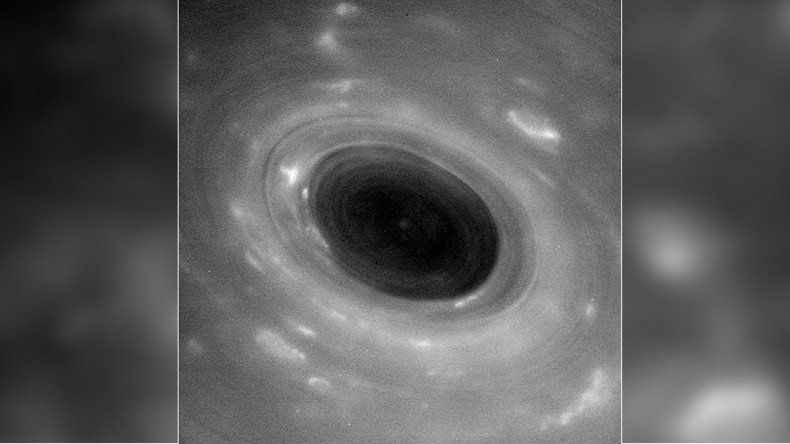Cassini captures ‘closest look ever’ at Saturn in sensational new photos

NASA’s Cassini spacecraft has re-established contact with Earth, sending back extraordinary new photographs as it ventures where no spaceship has traveled before – between Saturn and its rings.
The gap between the rings and the top of Saturn's atmosphere is about 2,400km (1,500 miles) wide.Cassini passed through the gap at speeds of about 123,000kph (77,000mph) on Wednesday as part of the craft’s final exploratory mission dubbed the ‘Grand finale.’
The craft used its dish-shaped antenna as a shield against oncoming particles while it travelled through the region as scientists feared that even small particles could have disabled the spacecraft. Using the dish in this way forced Cassini to lose contact with Earth.
READ MORE: Grand finale: Cassini begins dramatic dive between Saturn’s rings
The ship was programmed to collect data while close to the planet and then turn back towards Earth to re-establish contact. It successfully completed the maneuver on Thursday, about 20 hours after the crossing.
Among the data freshly beamed back to Earth are stunning new photographs of a giant hurricane on Saturn and the closest-ever photos of the planet’s atmosphere.
Our closest look ever at #Saturn’s atmosphere and giant hurricane. #GrandFinalehttps://t.co/giL0pulIEWpic.twitter.com/Qi3T2wSzc1
— CassiniSaturn (@CassiniSaturn) April 27, 2017
NASA released the photos on Thursday. The space agency hopes that the data will help scientists calculate the mass of the planet’s rings.
"In the grandest tradition of exploration, NASA's Cassini spacecraft has once again blazed a trail, showing us new wonders and demonstrating where our curiosity can take us if we dare,” Jim Green, director of the Planetary Science Division at NASA, said.
The $3.2 billion Cassini mission was launched in 1997 and is a joint venture between NASA, the European Space Agency (ESA) and the Italian space agency (ASI). It has been orbiting Saturn since 2004 and has captured thousands of incredible images of the ringed planet and nearby moons.
The gap between Saturn and its rings is no longer unexplored space – and we're going back 21 times. #GrandFinale! https://t.co/TSA7uQe4KSpic.twitter.com/t9RlhEsWCP
— CassiniSaturn (@CassiniSaturn) April 27, 2017
As part of the ‘Grand finale,’ Cassini will make 22 orbits that will bring it increasingly closer to the surface of Saturn before it intentionally plunges into the planet’s gaseous atmosphere this September.
The ‘Grand finale’ will “satisfy planetary protection requirements” and leave no contamination to other planets, according to the ESA. The next dive through the gap is scheduled for May 2.












